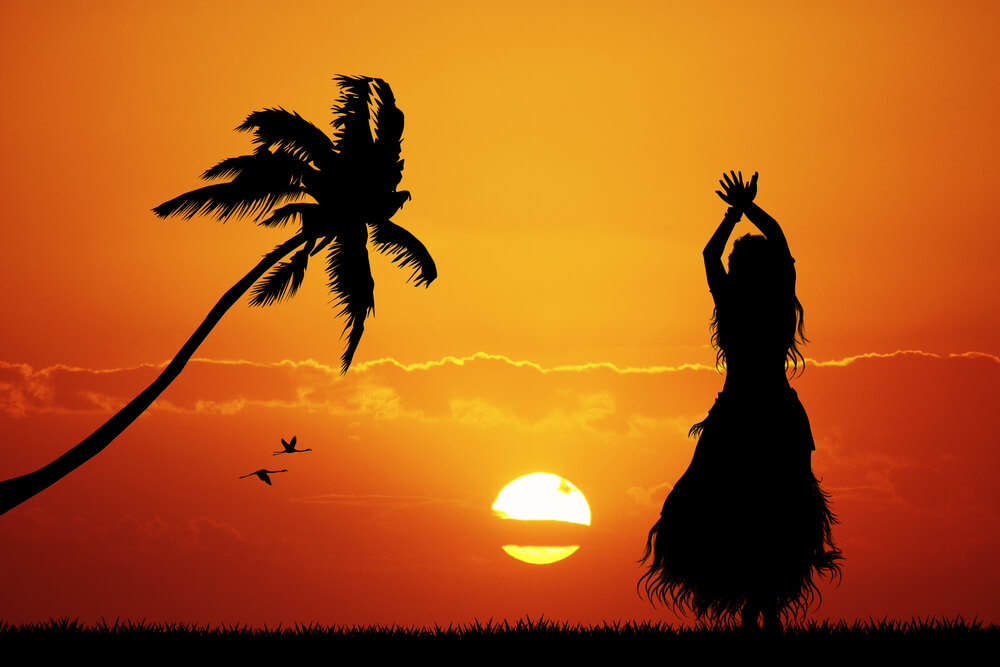From the cool breeze of the ocean to the calm nurturing sound of the forest, many places have their own natural environment where people and nature immerse themselves into a beautiful display of song and dance. In the beautiful islands of Hawaii, they have their way of capturing that harmony which has lasted for many generations.
Popular to western belief, the Hawaiian Hula is a beautiful and even sensual dance that is both elegant and tantalizing to the audience. So much that from Hollywood movies to Commercial Ads, it has become the staple image of Hawaii. But this dance is more than just the swaying of the hips and arms. It is an intricate series of movements that tells countless stories from different eras of its beautiful history and evolves even to today’s generation.
As an art, the Hawaiian Hula combines different specific movements to convey a story. Each movement of the hands, feet, and even the hips convey different elements of the story that is trying to convey. Gracefully spreading the arms towards the audience is telling that the person is offering something. Likewise, closing the arms back to the dancer means that the dancer respects the audience and welcomes them to their company. Even the tempo of the music and the vigor of the chant changes the mood and flow of the story.
Different Types of Hula Dance
There are many types of the Hula Dance but the most popular are the Hula Kahiko and Hula Auana. The Hula Kahiko, also known as the ancient hula, are traditional dances that combined with oli (chants), percussion instruments like Pa’u, and specifically coordinated movements that tell stories of different people, places, and events.
There are many types of the Hula Kahiko that convey different emotions and stories. Hula Ali’i was specifically designed to honor a chief or a monarch with different chants depending on the subject matter. Hula ‘Ili’ili is a soothing dance using two smooth pebbles clicking together in rhythm to the music. Hula Holoholona is a dance to pay respects to animals ranging from turtles, dogs, and even sharks. It would be a great experience to witness such dances but respect its sacredness by watching them from a distance and refrain from taking photos or videos. Debunking a popular belief, men can perform the Hula dance just as gracefully as women. The Hula dance was even a sacred ritual in selecting the best warriors. The Hula dance for them is not just a dance but a change in mindset in reminding them of what they have signed in for.
Hula ‘Auana, meaning to wander, is the more modern version of the Hula that aligns with the Western Culture. Although it has drifted away from the sacred element of the traditional dance, it is more interactive with the audience as it conveys more on the dance than on the chant. With a wide variety of musical instruments such as the ukulele and electric guitar, this type of dance has evolved into more intricate dances that convey different emotions and actions towards all aspects of life and beauty. With this type of dance, Hula Hapa Haole (Hapa Haole meaning part-foreign) uses English words instead of the traditional Hawaiian chants. This is commonly used in movies and other western media to appeal to an approachable tone. Thus, creating a new wider area in which the Hawaiian Hula can be recognized.
Even before Western Culture came to Hawaii, the locals used the Hawaiian Hula as a means to communicate, record, and tell stories. These ancient dances or Hula Kahiko were traditionally used to honor and entertain the chiefs who have travelled from different places. Each dance has many interpretations and elaborate movements that tell different elements of nature or even the fertility of the tribe’s leader. In fact, each tribe had to have a Kumu Hula (source of knowledge) to teach dancers to avoid any misstep. Learning and dancing the Hawaiian Hula was very serious and was not treated lightly. It was serious to the point that having a misstep was an omen of bad luck. Every part of the dance, including the chant and music, was choreographed with precision to properly convey the story.
As American Protestant Missionaries came to Hawaii in 1820, their interpretation of the dance led to its abolishment which hurt the people and was deprived of their cultural rights. Converting Hawaiian royalties was instrumental in taking away their freedom. But that did not stop the locals from performing their sacred dance as they have done it in secrecy. With the help of King David Kalakaua and Princess Ruth Keelikolani, the people regained their Hula traditions and by encouraging other locals to maintain the art.
With the rising popularity of the dance, people from across the Hawaiian Island and around the world compete in the Merrie Monarch Festival. These teams compete with their beauty, passion, and strength as they present their own interpretation of stories through the Hawaiian Hula. From 1963 by the Hawaii Chamber of Commerce until today, the competition has given new hope for the Hawaiian Hula for future generations. The competition is celebrated for the whole week every Easter Sunday every year. People from across the world travel to Hawaii to witness this monumental occasion.
Final Thoughts
From its sacred origins, troubled times, and to its glorious comeback, the Hawaiian Hula is filled with rich stories, deep emotions, and high respect to the people and nature. Hotels offering workshops to interested guests and free Hula performances on every part of the Hawaiian Islands.
Hawaiian locals remain active and passionate about spreading awareness of their traditions and creating immersive experiences for tourists and guests. Now with various Halaus Hula (Hula Schools) teaching different types of the dance, the culture and its great history will live on to future generations to come. Preserving the Hawaiian culture and the environment – a true marriage between the people and nature.


